Yemen: The Amazing Ancient 500-Year-Old Skyscrapers Made From Mud
Deep in Yemen’s most remote valley lies the city of Shibam. Surrounded by palm groves, and flanked by the steep cliffs leading up to the Yemeni highland on both sides, the city of 2,000 inhabitants hardly seems impressive. Just a handful of high-rise residential buildings, not so different from the Soviet-style blocks found across the Arab world.
Yet these buildings don’t date from the 20th century, or even the late 19th century. They were built almost five centuries ago, and have remained largely unchanged since.
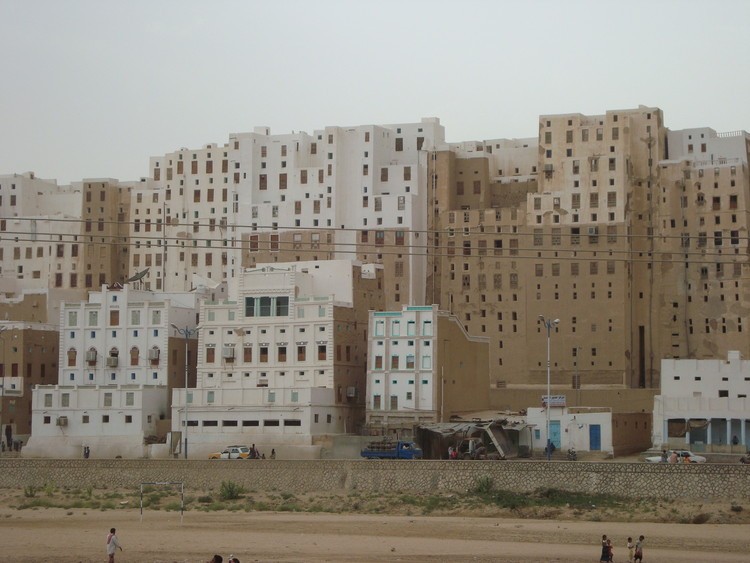 |
| Photo: ArchDaily |
Shibam Hadramawt is a town in Yemen. With about 7,000 inhabitants, it is the seat of the District of Shibam in the Governorate of Hadhramaut. Known for its mudbrick-made high-rise buildings, it is referred to as the "Chicago of the Desert", or "Manhattan of the Desert".
At the edge of a desolate expanse of desert known as the Empty Quarter, the 16th-century Walled City of Shibam remains the oldest metropolis in the world to use vertical construction. Once a significant caravan stop on the spice and incense route across the southern Arabian plateau, British explorer Freya Stark dubbed the mud city “the Manhattan of the desert” in the 1930s, according to National Geographic.
Every aspect of Shibam’s design is strategic. Perched upon on a rocky spur and surrounded by a giant flood wadi, its elevated position shields it from flooding while maintaining proximity to its primary source of water and agriculture. The city was built on a rectangular grid behind a fortified wall—a defensive arrangement that protected its inhabitants from rival tribes and offered a high vantage point from which enemies would be seen approaching.
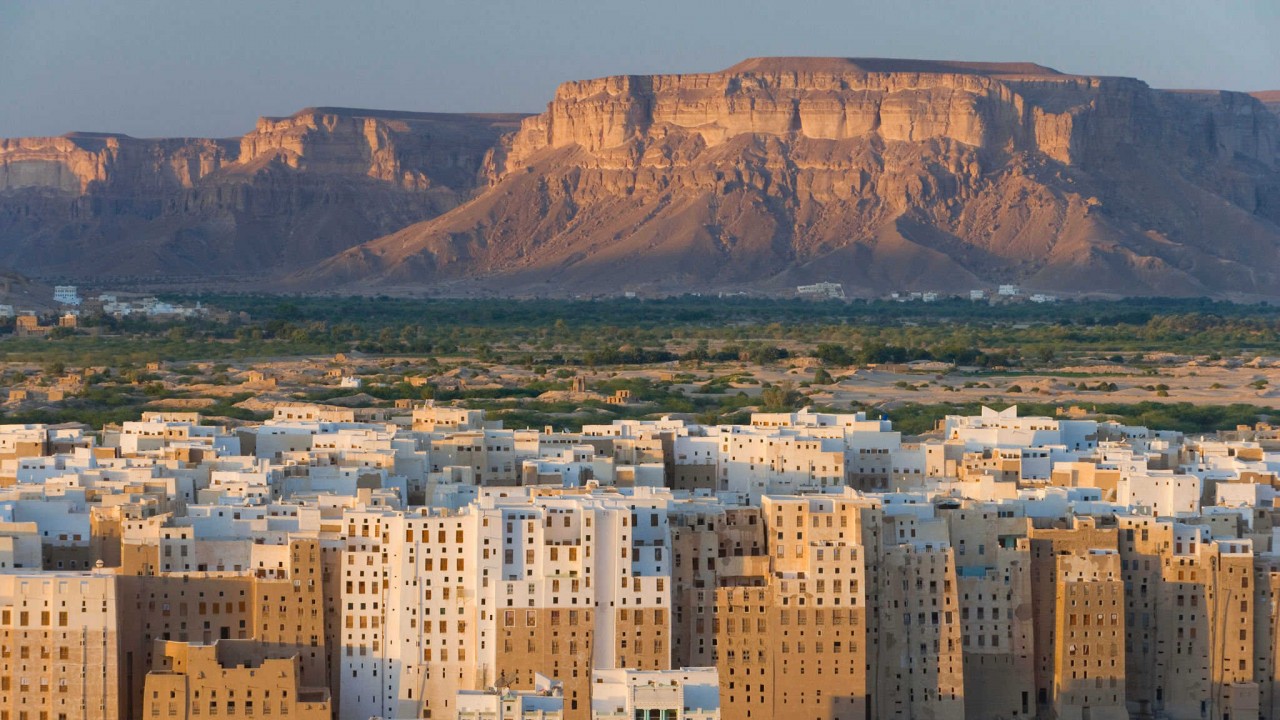 |
| Photo: Financial Times |
The mud-brick high-rises, which stretch up to seven stories high, were constructed from the fertile soil surrounding the city. A soil, hay, and water mixture were fashioned into bricks and left to bake in the sun for days. The windowless, ground floors were used for livestock and grain storage, while the uppermost levels typically served as communal floors for socializing. Connective bridges and doors between buildings also provided a means of quick escape—another one of the city’s impressive defensive features.
The structures are constantly threatened by wind, rain, and heat erosion, and require constant upkeep. In 2008, a tropical cyclone flooded Shibam, damaging several structures and threatening to topple its earthen towers.
History of Shibam Hadramawt town
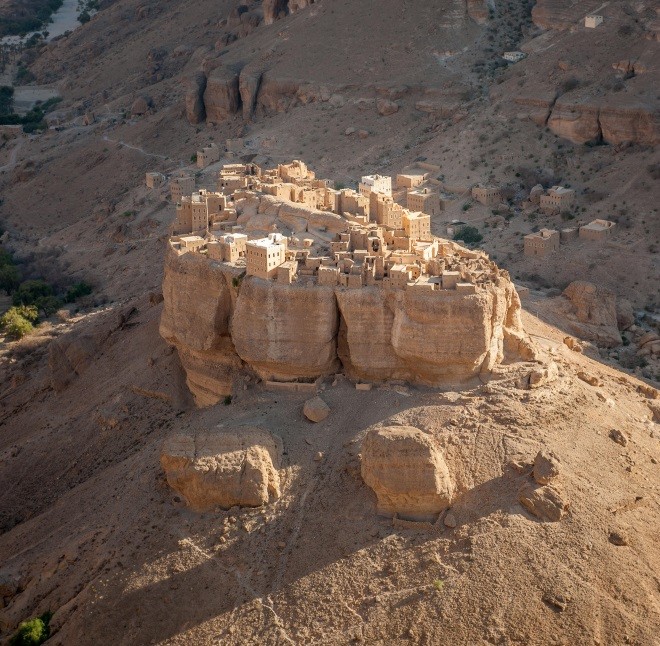 |
| Photo: Alamy |
There is no definite date for the original construction of Shibam, although it is locally dated back to at least 300 BCE. Villagers claim that the central Jami mosque was constructed during the reign of the Abbasid caliph Harun al-Rashid (786–809AD). A recently restored carved minbar from this mosque was dated to the ninth century AD. Inhabitants believe the older housing to be 200-300 years old, but it is an established fact that these buildings have been repeatedly reconstructed over the centuries, which has sustained the architectural mass and volume of the city, according to Architectural Review.
Between 2009 and 2014, further public and private buildings were renovated, three in Wadi Hadramut – Sah, Aynat, and Shibam; and two in Wadi Dawan – Rabat and Qarn Majid. Again, the implementation of the repairs was impeded due to the war. The political unrest in Yemen and the dire economic situation since 2011 made security an issue in the country. The logistics of working in Hadramut became increasingly precarious and difficult. However, the support and modest funding received ensured the restoration and reconstruction of the few distinguished landmarks and buildings that have impacted the urban fabric and communities there.
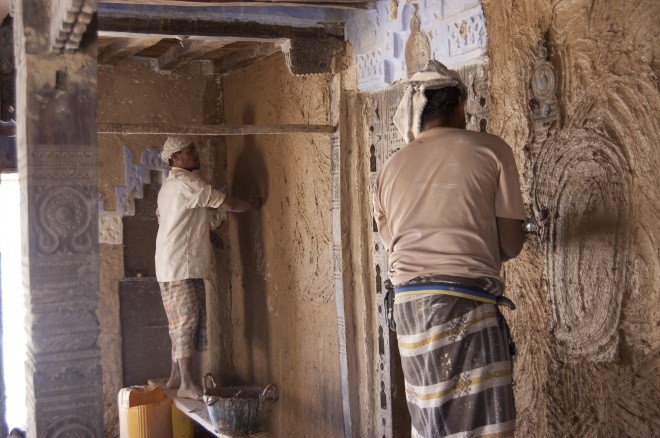 |
| Source: Salma Samar Damluji & Dawan Architecture Foundation |
In December 2017 a new project in partnership with the Cultural Emergency Response of the Prince Claus Fund in the Netherlands was initiated. Following a bomb detonated near the city gate in 2015, work began in January 2019 to repair the damaged city gateway, adjacent palace, and sur (city wall) in collaboration with the General Organization for Preservation of Historic Cities in Yemen (GOPHCY) Shibam office.
Despite the relative calm in Hadramut province since 2017, the work was delayed with the continuing war in the rest of the country. The precarious security situation resulted in difficult logistics, bringing together the project team from Mukalla and master builder from Tarim, traveling on damaged roads between the cities in Hadramut. Following preparations early in 2019, the first phase of the building, structural reinforcement, and restoration were implemented and finalized between March and May 2019. This phase included reinforcing the old walled city’s south gateway, Shibam Palace’s western rampart, and an adjacent house, cited by Architectural Review.
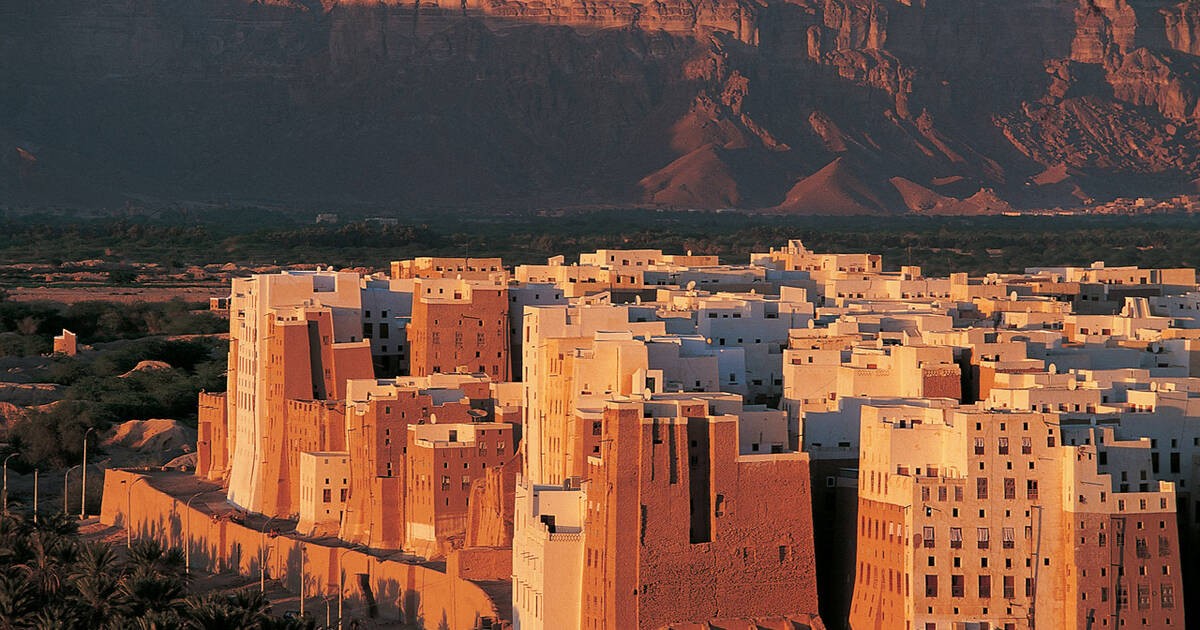 |
| Photo: UNESCO World Heritage Centre |
Reinforcing the structures of damaged earth buildings is a much more sensitive, precarious, and complex job than erecting new constructions – a more straightforward and more predictable process. However, it is also refreshing and very important to renew buildings and reinforce these structures in the established techniques and methods of the region, sustained by the versatility that earth, as an integral and renewable material, provides. It is a way of ensuring that traditional building methods, materials, and skills are passed down the generations, thus generating local work while also reducing environmental impact.
Shibam Hadramawt's Geography
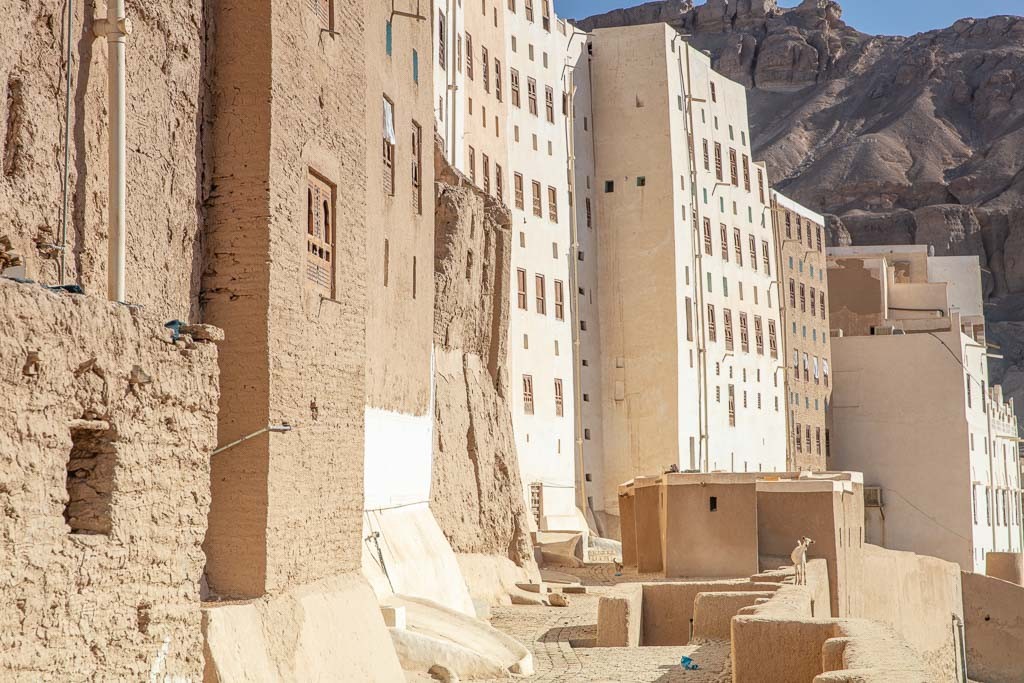 |
| Photo: The Adventures of Nicole |
The town is located in the central-western area of Hadhramaut Governorate, in the desert of Ramlat al-Sab'atayn. Its main road links Sana'a and other cities of western Yemen to the far eastern territories. The nearest towns are Seiyun, the seat of an airport, and Tarim, both in the east. Another road, departing from the village of Alajlanya, in the west, links Shibam to Mukalla, the governorate's capital, located by the Indian Ocean.
Shibam is often called "the oldest skyscraper city in the world". It is one of the oldest and best examples of urban planning based on the principle of vertical construction. The city has some of the tallest mud buildings in the world, with some of them over 30 m (98 feet) high, thus being early high-rise apartment buildings. In order to protect the buildings from rain and erosion, the walls must be routinely maintained by applying fresh layers of mud. The city is surrounded by a fortified wall, giving it the name "the walled city of Shibam".
 | Harbour Island: Visit The Most Romantic Pink Sands Beach In The World Travelling around Bahamas Island, tourists will be immediately drawn into the gorgeous and beautiful sight Pink sands beach, where the sand has a lovely shade ... |
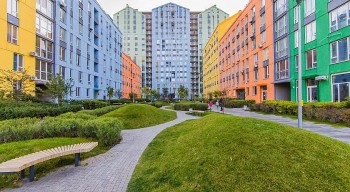 | Ukraine: Charming Lego-Like Comfort Town Bringing A Colorful World Somewhere in Kiev, Ukraine, there is a new built town that attracts many tourist and adventurers for its unique, brightful coloured houses and buildings, which ... |
 | Discover The Charming Beauty of Deepest Volcano Lake in Central America Lake Atitlán, the fascinating and charming volcano lake located in Central America, is one of the most beautiful lakes in the world that you must ... |
Recommended
 Travel
Travel
Vietnam Through Australian Eyes: Land of Flavor, Warmth, and Timeless Charm
 Travel
Travel
Strategies for Sustainable Growth of Vietnam’s Tourism from International Markets
 Travel
Travel
Vietnam Strengthens Its Presence On The Global Tourism Map
 Multimedia
Multimedia
Phong Nha-Ke Bang National Park Named Top Adventure Travel Site
 Travel
Travel
Vietnam Welcomes Record-High Number of International Visitors
 Travel
Travel
Luxury Train From Hanoi To Hai Phong To Be Launched In May
 Travel
Travel
Phong Nha Named Top Budget-Friendly Travel Destination for Spring 2025: Agoda
 Travel
Travel


